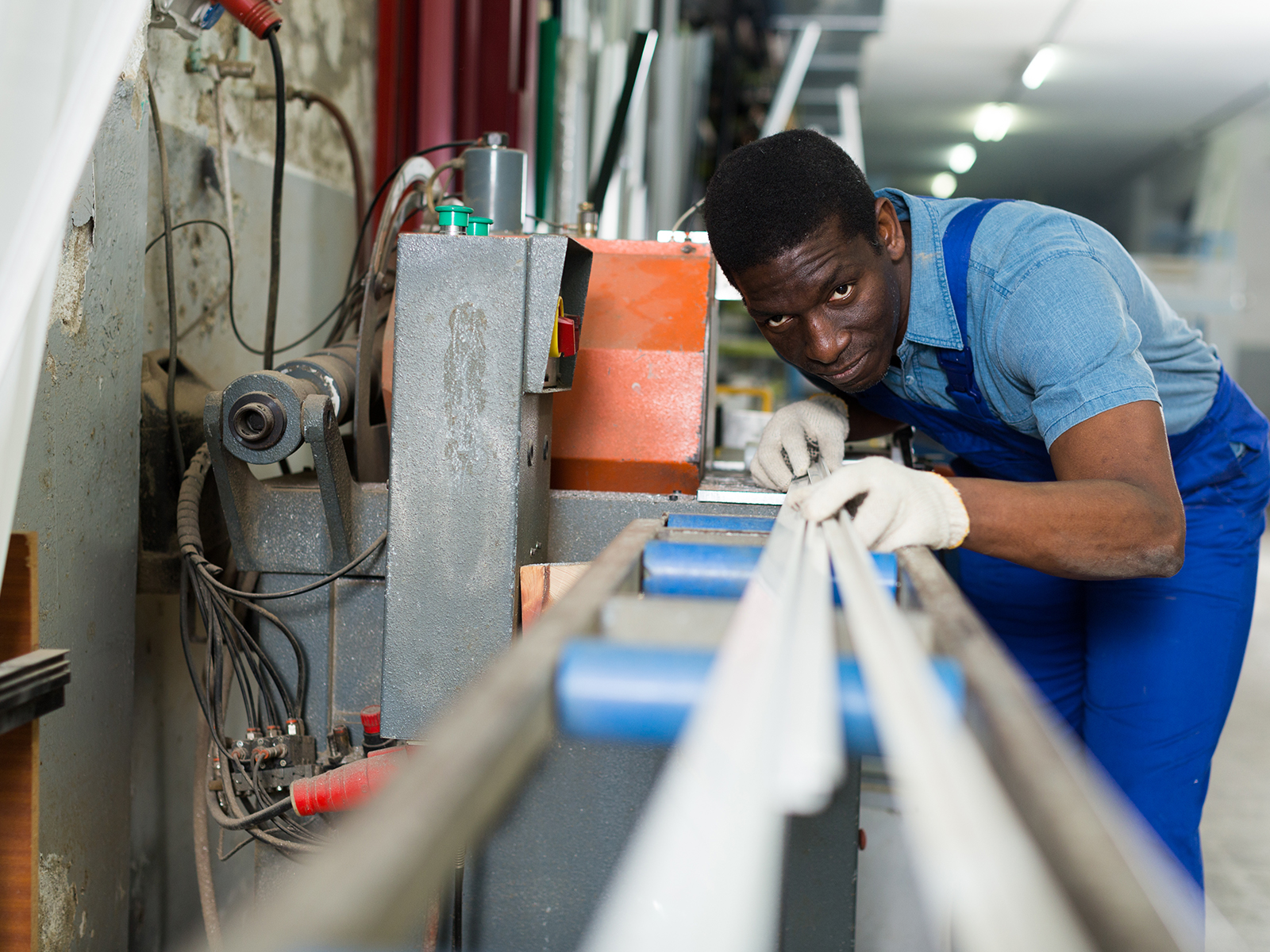Demand for machine operators spans multiple industries, so this fast-paced position can take you to construction, warehouses, manufacturing, production plants, and more. With a $37,450+ annual pay and projected job growth of 7% over the next 10 years, machine operator jobs are both profitable and stable. Interested in learning more about how to become a machine operator? Let’s take a look.
What does a machine operator do?
Machine operators, also called machinists, work in factories or production plants using heavy machinery to complete a variety of tasks such as manufacturing, assembly and disassembly, and more. Machine operators tend to specialize in one specific machine—such as a crane or forklift—and seek out job postings for that particular machine. Machine operators work as a team in a factory or production plant, and they report to a supervisor or manager at the job site.
At the job site, machine operators are responsible for a variety of machine-specific functions, starting with setting up their equipment for the day. Following their employer’s procedures and guidelines, the machinist will prepare the equipment and inspect it to make sure that everything runs smoothly before beginning work. Any abnormalities or malfunctions are noted beforehand so the machine can be repaired before work starts.
Once the equipment is set up, a machinist will load or unload materials and move materials around the job site. They’ll also align tools; adjust equipment; and turn, drill, shape, and grind machine parts to meet specifications.
Because machine operators work with heavy machinery, safety is of the utmost importance. Machine operators are responsible for maintaining their machines, completing repairs in a timely fashion, and adhering to all safety guidelines as outlined by their employer and the Occupational Safety and Health Administration (OSHA).

What is the typical schedule for a machine operator?
Most machine operators work shifts full-time or 40 hours a week. They’re typically assigned first, second, or third shift. First shift hours are 9 a.m. to 5 p.m. Second shift is from 5 p.m. until midnight or 1 a.m. Third shift workers are on the clock from 12 to 8 a.m.
However, some machinists may work more than 40 hours a week and be paid overtime. Specific schedules and the actual number of hours worked will depend on the company the machine operator works for and the operations that need to be completed.
Factories and production plants are typically open outside of standard business hours—including early in the morning and late at night, or even 24 hours a day. And because these factories rely on heavy machinery to produce goods, they also need a machine operator on-site to keep things running. As a result, machinists can expect to work overnight shifts.
What kind of environment do machine operators work in?
Machine operators typically work in manufacturing and production plants, factories, warehouses, or workshops. Depending on where a machine operator is positioned, their work environment may be more hazardous than work environments for other jobs. Because machine operators work with heavy machinery, they may be subjected to loud noises, debris, flying objects, or fires, though these risks are minimal when proper safety standards are followed.
In most cases, you can expect your work environment to be at about room temperature. However, some machine operators may work outside or in production plants that vary in temperature. A machine operator who works in open air will need to dress accordingly for hot or cold temperatures while still adhering to personal protective equipment (PPE) requirements. A machinist who works in a large warehouse with many other machines may experience warmer temperatures and will need to dress and hydrate accordingly.

What types of skills do machine operators need?
Physically, machine operators must be able to lift up to 50 lbs, and they should have good hand-eye coordination to maneuver and control heavy machinery. To ensure the safety of everyone at the job site and also the safety of the products being moved, machine operators should be able to see clearly, with or without corrective lenses.
If they operate a machine that is computer-controlled, it is helpful for a machine operator to be able to understand CAD/CAM technology. Skills in this area can be acquired through on-the-job training after the date of hire. Machinists should have solid math skills and the ability to read detailed instructions or schematic drawings.
Attention to detail is also important for machinists. Heavy machinery can be dangerous if operated incorrectly or if a machine is in need of repair, so machine operators must be able to identify problems, troubleshoot and repair the machine, and ensure that the repair has solved any lingering issues. This ensures the safety of the operator and of the rest of the crew on a job site.
Finally, machine operators should possess good communication skills. Machinists regularly work with other crew members to load or unload material, and they also often receive direction from someone else about where the machine or material should move to. A machinist with good communication skills will be able to easily complete these tasks and keep the job on-schedule.
What are the educational requirements for a machine operator?
Most employers prefer to hire machine operators with a high-school diploma or GED, but there are no formal education requirements to be a machinist. In most cases, machine operators learn through on-the-job training; some companies will pair a new hire with a more experienced machinist to share best practices, advice, and other knowledge about how to use the machinery, safety, and company expectations. The length of the training program will depend on what machinery you will be using, but most training periods last from a few weeks up to a few months. For instance, someone operating a forklift may need to be trained for a week, while someone operating a crane or other heavy machinery may need months of training.
If you’d like to gain familiarity with heavy machinery before beginning work as a machine operator, vocational programs exist to provide training and hands-on experience. This can make the transition to a new workplace more seamless so you can hit the ground running.
Some positions or equipment may require a special certification, but this varies by company, city, and state. An employer in one state may require a certification, while an employer in another state may not. The specific certifications required, if any, will be listed clearly in the machinist job posting.
While most machine operators specialize in one type of heavy machinery, experience using another type of heavy machinery can also be helpful. Knowledge of safety practices and basic operational principles are transferable between machines and workplaces.
What is the career outlook for machine operators?
Employment for machine operators is projected to grow 7% from 2020 to 2030. Growth like this means that demand for machine operators will keep pace with growth seen in other sectors, especially as the current workforce retires or moves into a new role. Approximately 84,300 openings for machinists are expected to open up within the next decade, making this a stable career choice with plenty of room for growth.
What is the best way to find a job as a machine operator?
Spherion has been connecting job seekers to light industrial opportunities for more than 70 years, so we know machinist jobs inside and out. Wherever you’re based across the country, Spherion can put you in contact with companies hiring for machine operators right now.



